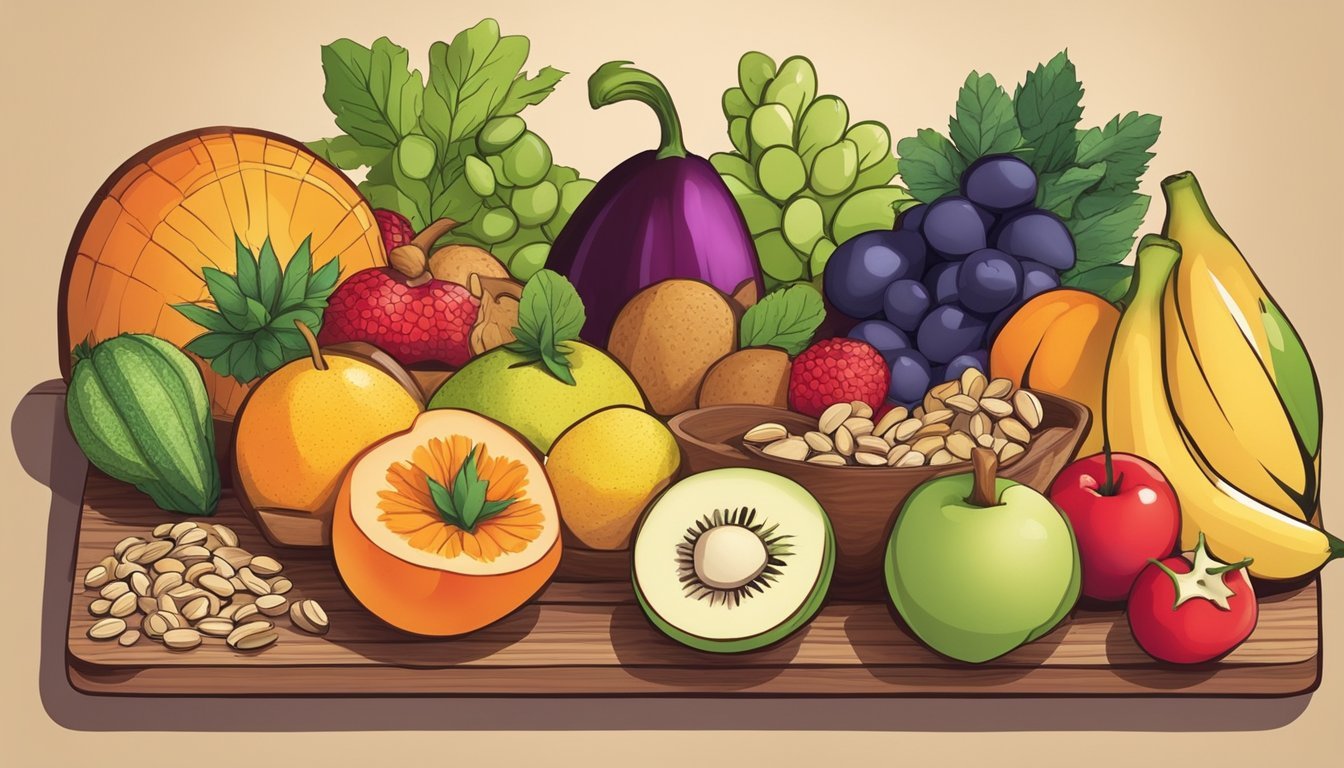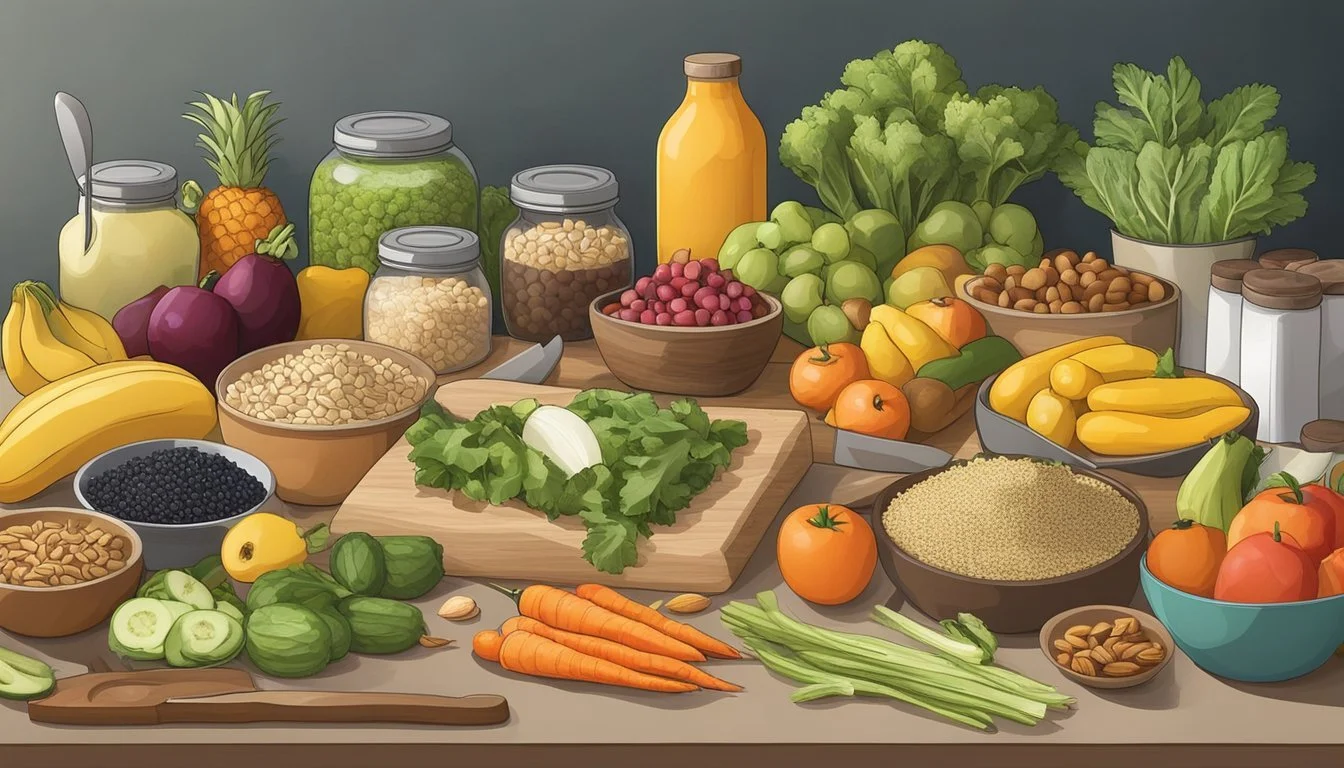How to Meal Prep for a Raw Paleo Diet
Efficient Strategies for a Healthier Lifestyle
Adopting a raw paleo diet often requires a comprehensive understanding of the lifestyle and the dietary habits of our ancestors during the Paleolithic era. This nutritional approach is centered around consuming unprocessed and uncooked foods that mimic the intake of hunter-gatherers from ancient times. Proponents of this diet argue that the human body is better adapted to the foods that were available to our Paleolithic ancestors, suggesting that modern eating habits are mismatched with our evolutionary biology.
Meal prepping for a raw paleo diet involves a thoughtful selection of foods, relying heavily on fresh fruits, vegetables, nuts, seeds, and lean meats. It advocates for the elimination of all processed foods, grains, legumes, dairy, and refined sugars. The goal is to create meals rich in nutrients without the use of cooking or high-heat preparation methods. This typically results in a diet high in fiber, antioxidants, healthy fats, and proteins.
Individuals following a raw paleo diet must be meticulous in planning their meals to ensure a balanced intake of essential nutrients. This may involve creative use of ingredients like chia seeds to prepare dishes like chia pudding and incorporating a variety of nuts, fruits, and vegetables to maintain a diverse and satisfying menu. The preparation process respects the food's natural state, with minimal alteration, aiming to nurture the body in the most primal way.
Benefits of Raw Paleo Meal Prep
An approach to meal preparation that focuses on raw paleo principles offers extensive advantages, from amplifying nutrient consumption to maintaining alignment with the fundamental Paleo guidelines. It strategically avoids processed foods and added sugars while emphasizing the intake of raw, unprocessed plant and animal products.
Boosting Nutrient Intake
Raw paleo meal prep ensures that individuals consume a higher concentration of nutrients found in raw fruits, vegetables, and proteins. Cooking can sometimes diminish the nutrient density, so eating these foods raw maximizes the body's intake of vitamins, minerals, and enzymes.
Avoiding Processed Foods
This meal prep style inherently eliminates processed foods, added sugar, and artificial sweeteners, supporting a clean diet free from unnecessary additives and preservatives typically found in processed products.
Time and Cost Efficiency
Planning ahead with meal prep lists and shopping for local and seasonal ingredients can decrease time spent grocery shopping and reduce food costs. Relying on sustainable and ethical food sources also supports local economies.
Aligning with Paleo Principles
Raw paleo meal prep aligns closely with the philosophy of eating foods that would have been available to our ancestors. This includes meat, vegetables, fruits, and eliminating grains, legumes, and dairy products from one’s diet.
Incorporating Healthy Fats
Healthy fats, such as those from avocado, nuts, seeds, olive oil, and coconut oil, are crucial in raw paleo diets. Utilizing these fats in meal prep ensures balanced energy intake and supports overall health.
Ensuring Diversity in Meals
Creating a meal prep plan allows for variety in meals, which is essential for receiving a range of nutrients and keeping mealtime enjoyable. Utilizing different combinations of meat, vegetables, and fruits prevents dietary boredom.
Sustainability and Eco-conscious Choices
Meal prep according to raw paleo principles often involves choosing local, seasonal, and sustainably sourced foods. This can result in a smaller carbon footprint and a contribution to more eco-conscious consumption habits.
Managing Cravings and Temptation
Having a refrigerator stocked with pre-prepared raw paleo meals helps in managing cravings and resisting the temptation of sweet, processed options. It makes healthy choices easily accessible, reducing the likelihood of reaching for non-paleo alternatives.
Customizing to Individual Needs
Meal prep allows for personalization to accommodate allergies, intolerances, and specific dietary needs. By planning, individuals can tailor their diet to include the best balance of healthy fat, protein, and vegetables for their unique requirements.
Understanding Raw Paleo Diet Basics
In this section, we explore the fundamental aspects of the Raw Paleo Diet, mainly focusing on the diet's core principles, the foods to incorporate or avoid, and how to manage macro and micronutrient intake.
Core Principles of Raw Paleo
The Raw Paleo Diet adheres to eating patterns similar to those believed to have been followed by hunter-gatherers during the Paleolithic era. This diet emphasizes the consumption of raw, unprocessed foods, operating on the premise that cooking can diminish the nutritional value of certain foods.
Foods to Include and Exclude
A person on a Raw Paleo Diet includes:
Meat: Preferably from grass-fed sources to maximize the intake of omega-3 fatty acids.
Veggies: A variety of raw vegetables for their vitamins and minerals.
Fruits: Consumed in moderation due to their natural sugar content.
Fats: Healthy fats such as avocado oil and olive oil.
Foods to exclude:
Grains and legumes: These are avoided as they are not part of the traditional paleo diet.
Dairy: Excluded due to the lactose content and processing involved.
Refined sugar: Not eaten as it is a processed product.
Balancing Macros and Micros
When meal prepping for the Raw Paleo Diet, it's crucial to balance proteins, fats, and carbohydrates:
Protein: Sourced from raw or lightly processed meats, eggs, and fish.
Fat: Derived from nuts, seeds, and high-fat fruits like avocados.
Carbohydrates: As legumes and grains are excluded, carbs mainly come from fruits and some root vegetables.
Adequate intake of vitamins and minerals is maintained through a diverse range of raw vegetables and fruits. Some followers might consider a modified version of the diet, similar to Whole30 or keto, to tailor the macro distribution to their intense physical activity levels.
Setting Up for Success
In adopting a raw paleo diet, success hinges on preparation. Proper planning and organization can streamline the process, ensuring that one adheres to their dietary goals with consistency.
Creating a Weekly Meal Plan
One should begin by mapping out a weekly meal plan, detailing what they'll consume for breakfast, lunch, dinner, and snacks. Including a variety of vegetables, fruits, and meat will keep meals balanced and prevent monotony.
Breakfast: could include items like avocado, sliced raw vegetables, and sprouted nuts.
Lunch: might consist of a large salad with mixed greens and a protein such as sashimi-grade fish.
Dinner: could feature a raw paleo wrap with collard greens and raw minced meat.
For snacks: almond butter with apple slices or raw kale chips are nutritious options.
Assembling a Comprehensive Shopping List
Creating a detailed shopping list is critical. This list should be categorized by food type to simplify the shopping experience:
Vegetables: Spinach, bell peppers, fermented veggies
Fruits: Berries, avocados, apples
Meats: Grass-fed beef, wild-caught fish, organic chicken
Organizing Your Kitchen and Pantry
Organization in one's kitchen and pantry is essential for a seamless meal prep experience. Clearing out non-paleo items, arranging foods by type, and ensuring that all items are visible and easily accessible supports adherence to the meal plan.
Choosing the Right Equipment
Selecting suitable tools and equipment can vastly enhance the raw paleo meal prep process. Key essentials include:
Sharp knives
Quality cutting boards
A variety of containers for storage
Implementing Meal Prep Routines
Finally, establishing a consistent routine and schedule for meal prep can transform it into a sustainable habit. Setting aside a specific day and time each week to prepare meals can help maintain this lifestyle with ease and efficiency.
Raw Paleo Meal Prep Techniques
When embarking on a raw paleo diet, meal preparation revolves around meticulous washing, careful storing, and the creative combination of natural flavors. Here are essential techniques to master:
Washing and Storing Produce
It's critical for one to rigorously wash all fruits and vegetables to remove debris and potential contaminants. Using a natural vinegar solution can help in this process. After washing, fruits like berries can be pat-dried and stored in air-tight containers lined with paper towels to absorb excess moisture. Leafy vegetables, such as lettuce, should be dried using a salad spinner and stored in a similar fashion to maintain freshness.
Preparing Proteins
Proteins such as fish or chicken should be sourced fresh and handled with care. When prepping fish, one must ensure it is sashimi-grade to avoid health risks associated with consuming raw seafood. Chicken is not typically consumed raw, even in a paleo diet, due to the risk of bacterial contamination, so it may be omitted or used in minimal, safely-sourced forms like in certain types of high-quality, cultured chicken salad.
Enhancing Flavor without Cooking
Raw paleo cuisine relies on the use of spices, herbs, and acids like lemon juice to add zest to dishes without the need for cooking. For instance, a marinade of lemon juice, minced garlic, and herbs can greatly enhance the flavor profile of raw vegetables and meats. Garlic adds a potent flavor that is both healthful and satisfying.
Assembling Ready-to-eat Dishes
Assembling dishes ahead of time can simplify one's raw paleo journey. Preparing lettuce wraps with a medley of fresh vegetables and a protein, like seasoned sashimi, provides a quick and nutritious meal. Similarly, spiralized sweet potato can be mixed with an array of colorful vegetables and a tangy dressing to create a delightful noodle-like dish.
Understanding the Role of Fermentation
Fermentation is a cornerstone in preparing probiotic-rich foods that are staples in a raw paleo diet. Culturing foods like vegetables to make homemade sauerkraut or kombucha can introduce beneficial bacteria into one's diet. These fermented foods support gut health and add complex flavors to the raw paleo palette.
Meal Prepping Specific Foods
When adopting a raw paleo diet, it's essential to prepare various food groups properly to ensure they retain their nutritional value and are safe to consume. This includes careful handling of proteins like meat and fish, as well as the appropriate storage of fruits, vegetables, nuts, seeds, and healthy fats, all of which will contribute to a diverse and nourishing diet.
Managing Meat and Fish
To effectively meal prep meat and fish, one must ensure freshness and safety. Meat should primarily come from grass-fed sources, like beef or turkey, while fish should be rich in omega-3 fatty acids, such as salmon. Both protein sources should be stored below 40°F, typically at the bottom of the fridge to avoid any cross-contamination with other foods.
Handling Vegetables and Fruits
Vegetables like broccoli and spinach should be washed and stored in airtight containers to maintain freshness. Similarly, fruits such as berries and bananas are best kept in containers that allow a bit of airflow. One may prepare salads and wraps in advance but should add dressings or soft fruits just before serving to avoid sogginess.
Incorporating Nuts, Seeds, and Fats
Raw paleo diets benefit greatly from the inclusion of nuts, seeds, and healthy fats. Olive oil and avocado provide essential fats that can be consumed directly or added to dishes. Nuts and seeds should be stored in dry, airtight containers to keep them fresh. Soaking nuts and seeds can activate enzymes, making them easier to digest.
Creating No-cook Paleo Compliant Meals
The raw paleo diet thrives on creative no-cook meals. Simple combinations like coconut milk and chia seeds for puddings, or blended smoothies with a mixture of fruits, greens, and seeds, offer quick nutrition. Raw crudités can be paired with mashed avocado for snacks, while fruit and nut bars provide energy-dense options for those on-the-go.
Recipes and Meal Ideas
When preparing meals for a raw Paleo diet, one must focus on fresh, uncooked produce and other natural foods. Here are specific recipe ideas and meal suggestions that adhere to the raw Paleo principles, providing a variety of flavors and nutrients.
Breakfast Options
Avocado and Egg Breakfast Bowl: Scoop out halves of an avocado and fill them with raw eggs. Serve alongside a mixed berry smoothie. Remember, the eggs should be high-quality, preferably organic and from free-range chickens, and consumed only if one is comfortable eating them raw.
Fruit and Nut Smoothies: Create a nutritious smoothie by blending fresh fruits like bananas and berries with a spoonful of almond butter and a dash of coconut oil. This combination provides a good balance of natural sugars, fats, and protein.
Lunch Selections
Salads with Nuts and Seeds: Mix a variety of greens such as spinach, kale, and arugula. Top the salad with a handful of raw nuts, and dress with a vinaigrette made from olive oil and fresh lemon juice.
Zucchini Noodle Lettuce Wraps: Spiralize zucchini into noodles, and wrap them in crisp lettuce leaves. Add sliced vegetables like bell peppers, and include a squeeze of lime for zest.
Dinner Inspirations
Raw Shredded Chicken Salad: Shred high-quality, organic chicken breast and mix with diced avocado, cherry tomatoes, and cauliflower rice. Season with fresh herbs and lemon juice.
Sweet Potato Noodles: Spiralize sweet potatoes and toss them with a dressing made from extra-virgin olive oil, raw garlic, and fresh parsley.
Snack and Side Suggestions
Nuts and Olives: A simple and satisfying snack comprising a mix of raw almonds, cashews, or walnuts, paired with a selection of olives.
Dried Fruits: Enjoy a small portion of dried fruits such as figs or apricots to satiate mid-meal hunger.
Addressing Sweet Cravings
Berries with Almond Butter: Top a bowl of fresh berries with a hearty dollop of raw almond butter for a sweet, yet healthy treat.
Coconut Oil Chocolates: Mix raw cacao powder with coconut oil and a natural sweetener to taste, then freeze to create a raw Paleo-friendly chocolate treat.
Common Challenges and Solutions
Adopting a raw Paleo diet entails more than changing what one eats; it entails adapting to a set of radical dietary and lifestyle changes which may pose particular challenges.
Navigating Social Situations
When one is eating out or attending social events, adhering to a raw Paleo diet can be tricky due to limited menu options and peer pressure. To mitigate these issues:
Beforehand: Call restaurants in advance to inquire about raw Paleo-friendly options.
During events: Bring one's own dish to share, ensuring there’s something suitable to eat.
Dealing with Hunger and Appetite
Ensuring sustained fullness and satiety on a raw Paleo diet might be a concern, especially for beginners who may experience an increase in hunger or a desire for snacking. To address this:
Regular meals: Eat consistently scheduled meals to regulate hunger patterns.
Nutritious snacks: Have raw Paleo snacks like nuts and seeds on hand for sustenance between meals.
Adjusting to Lifestyle Changes
The shift to a raw Paleo diet can be significant, impacting one's nutrition and daily habits. It is essential to:
Transition gradually: Introduce raw Paleo options slowly to allow one's body to adapt to the dietary changes.
Educate oneself: Gain a thorough understanding of the diet's requirements to maintain proper nutrition.
Staying Motivated and Consistent
Maintaining the discipline for a raw Paleo diet requires motivation and acknowledgment of progress towards one's goals. Here are ways to stay on track:
Set clear goals: Chart short-term and long-term objectives to visualize progress.
Celebrate victories: Recognize even the small achievements to keep motivation high.
Advanced Meal Prepping Strategies
To excel in meal prepping for a raw Paleo diet, one must master techniques like batch cooking and leveraging seasonal produce. These strategies not only streamline the process but also ensure a diverse and nutritious diet.
Batch Cooking and Freezing
One prepares large quantities of permissible raw Paleo dishes in batch cooking beforehand. These meals can then be frozen to prolong their shelf life. For example, they may prepare and divide raw zucchini noodles into single-serving containers, ready to be thawed and consumed with a fresh, raw sauce.
Freezing Tips:
Use air-tight containers to minimize freezer burn.
Label each container with the date of preparation.
Using Preservation Techniques
Preservation through canning, pickling, and dehydrating maintains the integrity of raw foods while extending their usability. Canning fresh tomatoes in their own juices can provide a base for raw Paleo soups, while pickling offers a way to enjoy vegetables out of season.
Dehydrating: It's an ideal way to make raw snacks like fruit leather or crisp kale chips that are Paleo-friendly and well-suited for a busy lifestyle.
Rotating Seasonal Ingredients
They focus on local produce that change with the seasons to benefit from peak freshness and nutrient content. Utilizing a seasonal chart helps the individual plan meals around what is currently available, optimizing the benefits of their Paleo meal prep.
Sustainability: This practice reduces food miles and supports local farming practices.
Exploring Raw Paleo Variations
Exploring variations such as vegan, low-carb, Whole30, or autoimmune protocol options can introduce new foods into the diet, ensuring nutritional variety. A meticulous planner might dehydrate eggplant to create a raw Paleo, low-carb alternative to traditional flatbreads.
Variety in Meal Prepping: Introducing a range of raw nuts and seeds, along with fermenting vegetables, can cater to various dietary needs while respecting Paleo principles.
Long-term Meal Prepping and Maintenance
To sustain a raw paleo diet over time, one needs to be dynamic in their approach to meal prepping, ensuring a diverse and pleasurable palate that integrates seamlessly with lifestyle changes.
Evolving Your Meal Prep With Experiences
As individuals progress on their raw paleo journey, their meal preparation should evolve with their experiences. Learning from past preparations allows for fine-tuning the balance of flavors and nutrients. They should document successful combinations and note any logistical issues to improve future meal prep efficiency.
Maintaining Variety and Enjoyment
She keeps meal prepping engaging by maintaining a variety of ingredients and recipes. Introducing new culinary creativity and flavors weekly can be as simple as:
Experimenting with different raw spices
Incorporating a new type of nut or seed
Trying various fresh, organic produce
This not only adds enjoyment but also benefits well-being through a balanced nutrient profile.
Integrating Into a Full Lifestyle
One's meal prep routine must align with their full lifestyle for long-term consistency. They can achieve this by:
Aligning meal prep times with personal schedules
Ensuring that meals are portable if they lead an active, on-the-go lifestyle
Considering the preferences of family members if preparing shared meals
Continual Learning and Adaptation
A key to maintaining a raw paleo diet long-term is continual learning and adaptation. They should stay informed about the latest paleo research and refine their techniques accordingly. Joining a community and accessing resources can help one to stay educated and motivated. Benefits include:
Shared experience and wisdom
New educational content on raw paleo living
Conclusion
When one adopts a raw paleo meal plan, their commitment to health goals is paramount. They meticulously select unprocessed, whole foods that originated in the paleolithic era, tailored to modern living. Such a diet often includes a bounty of fresh fruits and vegetables, lean meats—preferably from grass-fed sources—fish rich in omega-3 fatty acids, eggs, nuts, and seeds. The oils favored are those extracted from fruits and nuts, such as olive or walnut oil.
The satisfaction derived from following a raw paleo diet comes from both the vibrant variety of foods and the nutritional benefits they confer. Meal prepping in this context ensures that individuals always have ready access to meals that align with their dietary aspirations, reducing the likelihood of deviating from their chosen path.
Week-at-a-Glance Meal Plan:
Day Meal Options Monday Chia pudding with blueberries Tuesday Fresh fruit medley Wednesday Leafy green salad with nuts Thursday Sashimi with avocado slices Friday Vegetable sticks with guacamole Saturday Almond butter on apple slices Sunday Raw vegetable soup
Adherence to such a meal plan facilitates a structured approach to one's diet and can yield profound health benefits. Proper planning and a variety of recipes help maintain enthusiasm and prevent dietary monotony. Raw paleo enthusiasts should remain confident, knowing their dietary choices can lead to better health and well-being while simultaneously enjoying the flavors nature provides.








